Reflections of a disaster, Friday Morning, Flooding in Cork City Centre, 20 November 2009 (picts by KMC)
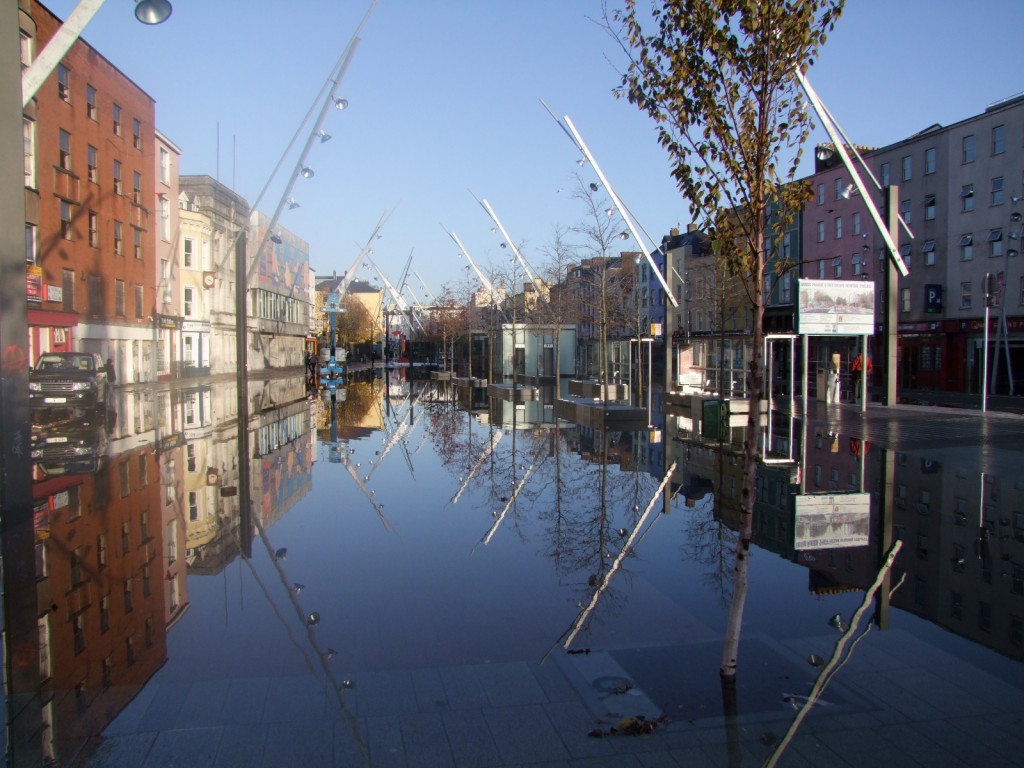
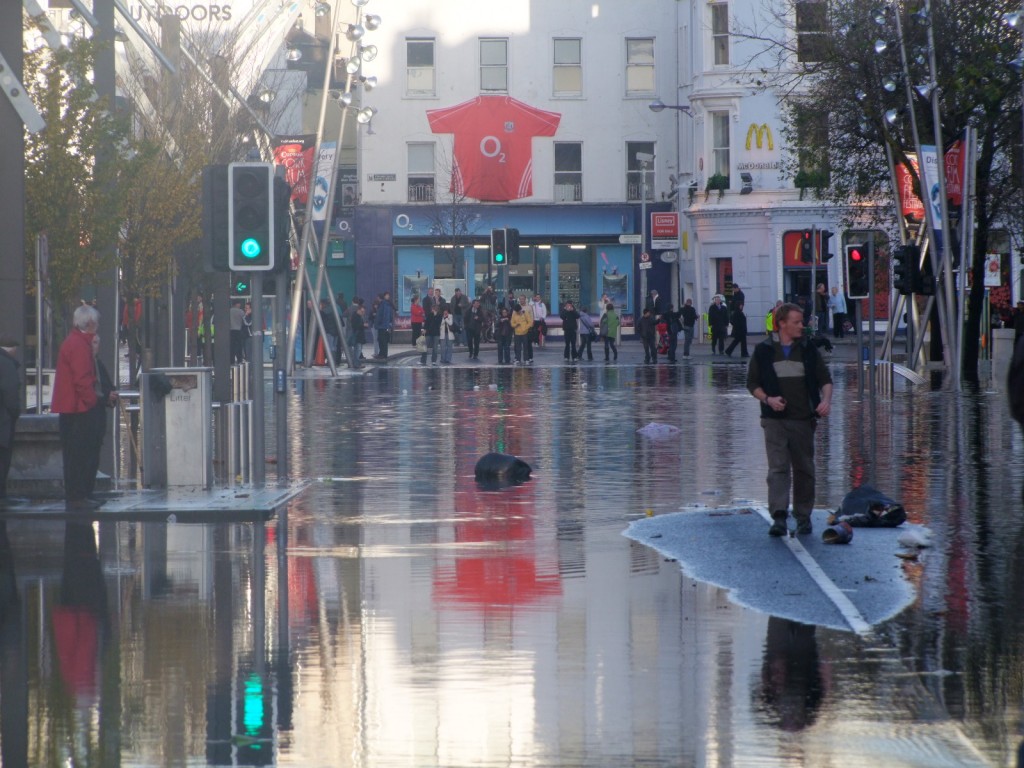
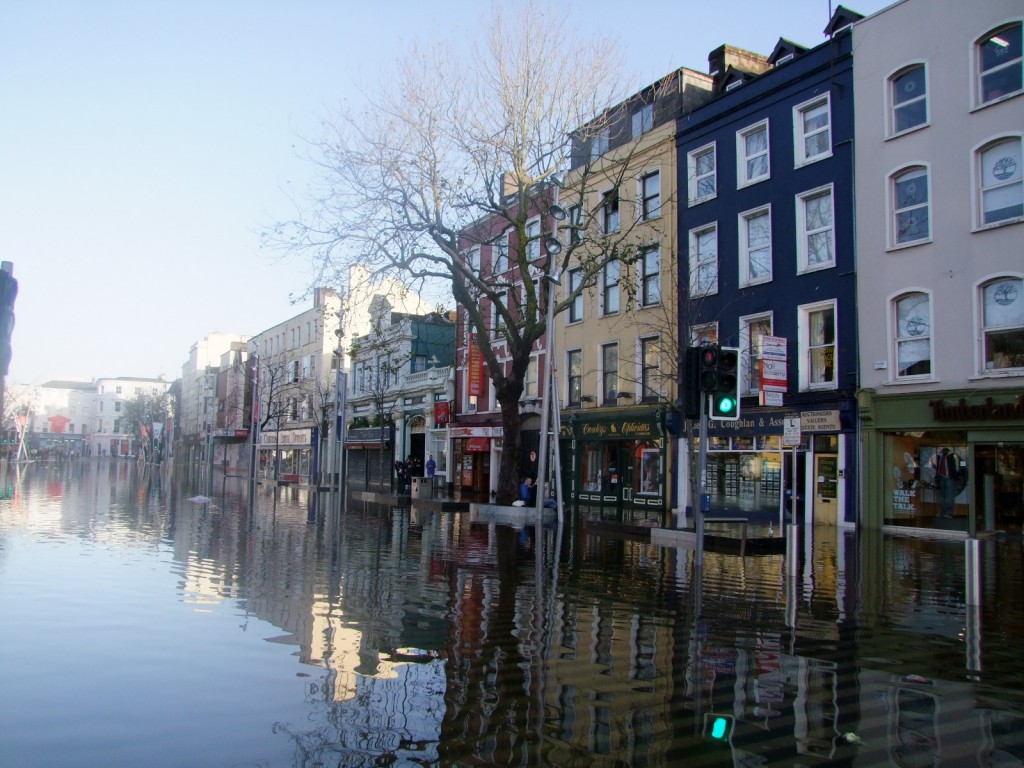
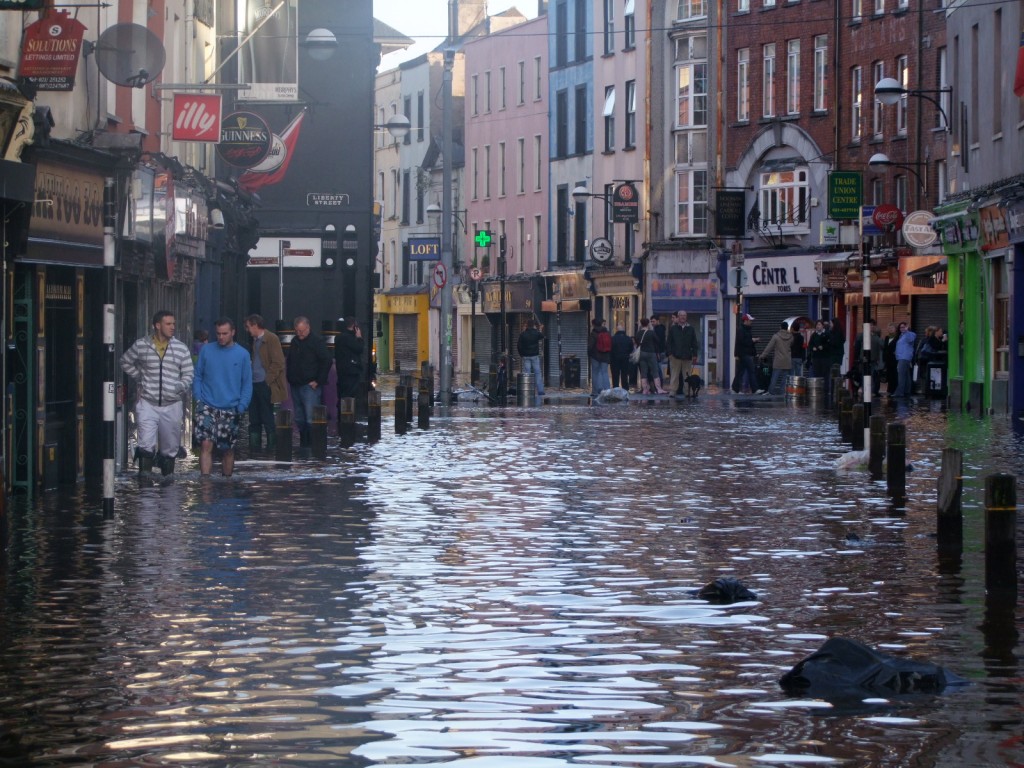
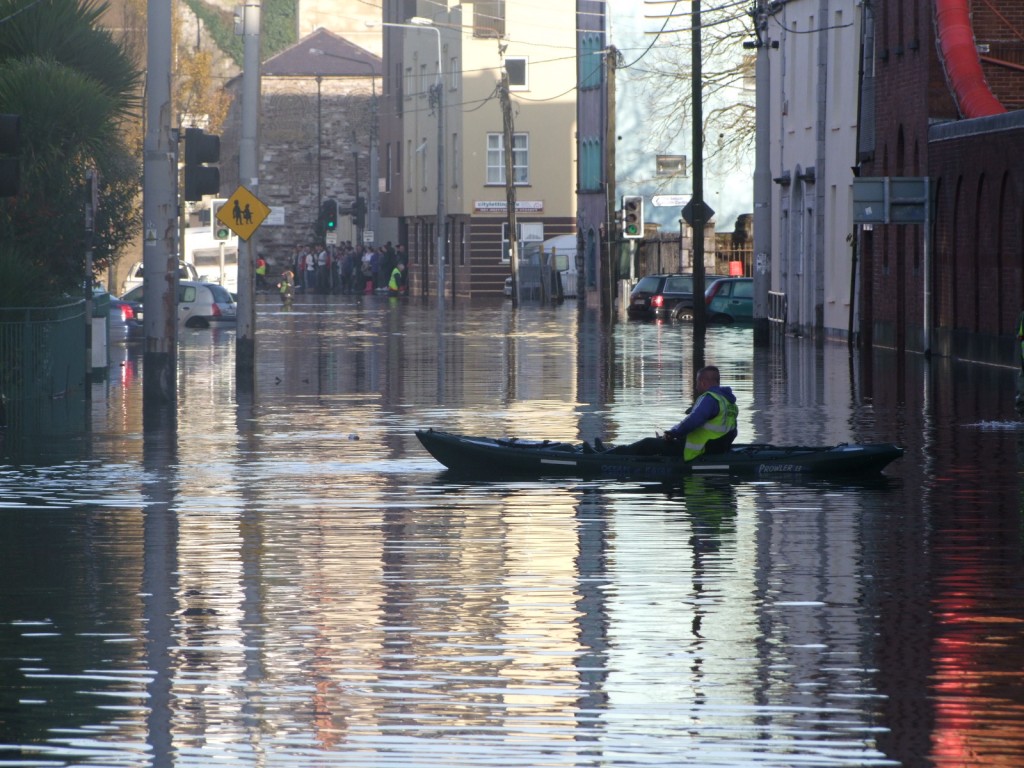

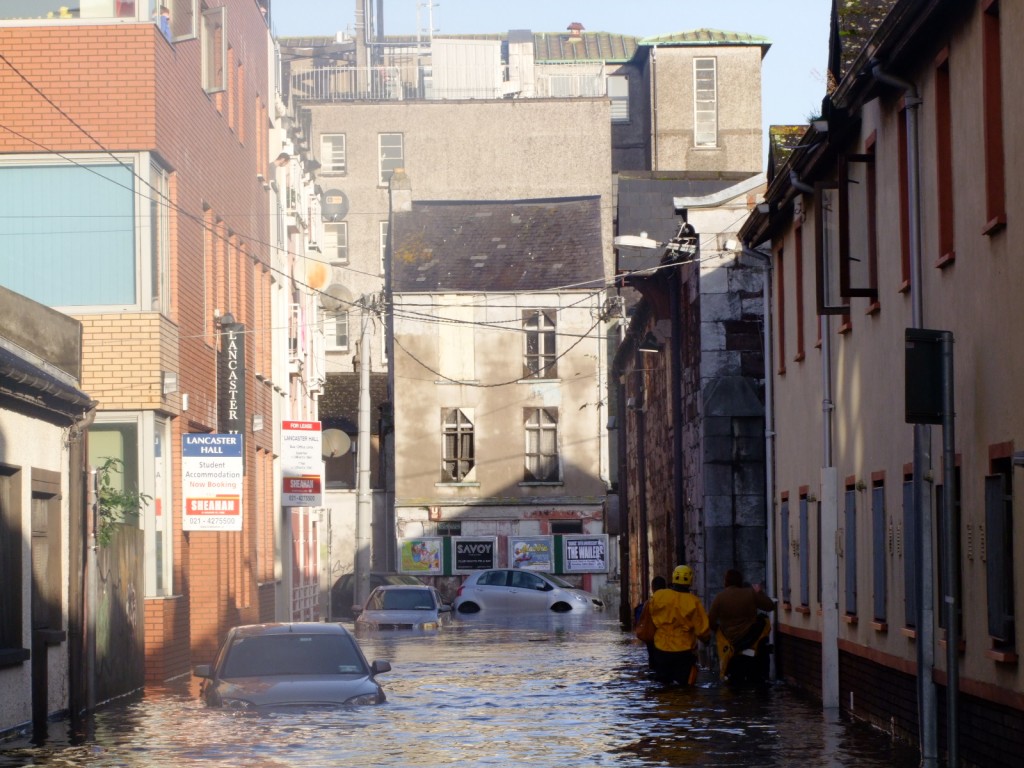

Reflections of a disaster, Friday Morning, Flooding in Cork City Centre, 20 November 2009 (picts by KMC)








An unpredented disaster and one that will be remembered for decades to come
Flooding in Cork, TV3 news story, http://www.youtube.com/watch?v=ZEgktfQ9Pf0&feature=related
Flooding in Cork – youtube clips
http://www.youtube.com/watch?v=PFzC7gEcHUw&feature=related
http://www.youtube.com/watch?v=-qiH5Spx94Y&feature=related
http://www.youtube.com/watch?v=dQUTdR2NYbs&feature=related
http://www.youtube.com/watch?v=lEWqbWGS4tw&feature=related
This was sent onto me…..slideshow of the flood
http://picasaweb.google.com/lornaocallaghan/FloodingCorkCity20thNovember2009#
November 14th 2009 Patricks Street Cork
When artists protest they protest with style!
A ceili organised by Ballinlough Community Association will take place in Ballinlough Community Centre on Saturday evening, 28 November, 8pm onwards, admission E.5, music by the Cogans of Carrigaline, join us for music and craic. Further information from Cllr Kieran McCarthy, 087 655 3389
Join the Cogan’s from Carrigaline as they entertain and teach us all how to ceili dance. The ceili was first run in March 2009.
‘McCarthy’s History in Action’ in association with RSVP (Red Sandstone Varied Productions) will take place in Ballinlough Community Centre on Sunday 29 November, 1-5pm. This event, supported by Cllr. Kieran McCarthy, will bring history alive for all the family, with the participation of re-enactment groups, storytellers and more.
The vision for the day is one of encouraging community participation, by inviting the local community to be involved in its creation, either in performance or as helpers. Join re-enactors to honour the past, where there is much to learn, as one helps build the future; the organisers are encouraging people to actively engage with life around them, as well as examine the history that brought us here. The organisers believe that growth and transformation in society is affected positively by respecting our heritage in this way.
Cllr Kieran McCarthy noted: “This project is aimed at all spectrums of the community. It is a living history project with a key focus on education, identity and civic awareness. It also complements the work of the Discover Cork: Schools Heritage Project. I look forward to welcoming the community to Ballinlough Community Centre”. More information can be found under winter programme and blog at www.kieranmccarthy.ie or contact Yvonne Coughlan at 085-7335260 or Kieran McCarthy at 0876553389. Refreshments will also be made available on site. This non-profit event aims to break even and offers admission at €6 (€5 concessions) and a family ticket €20.
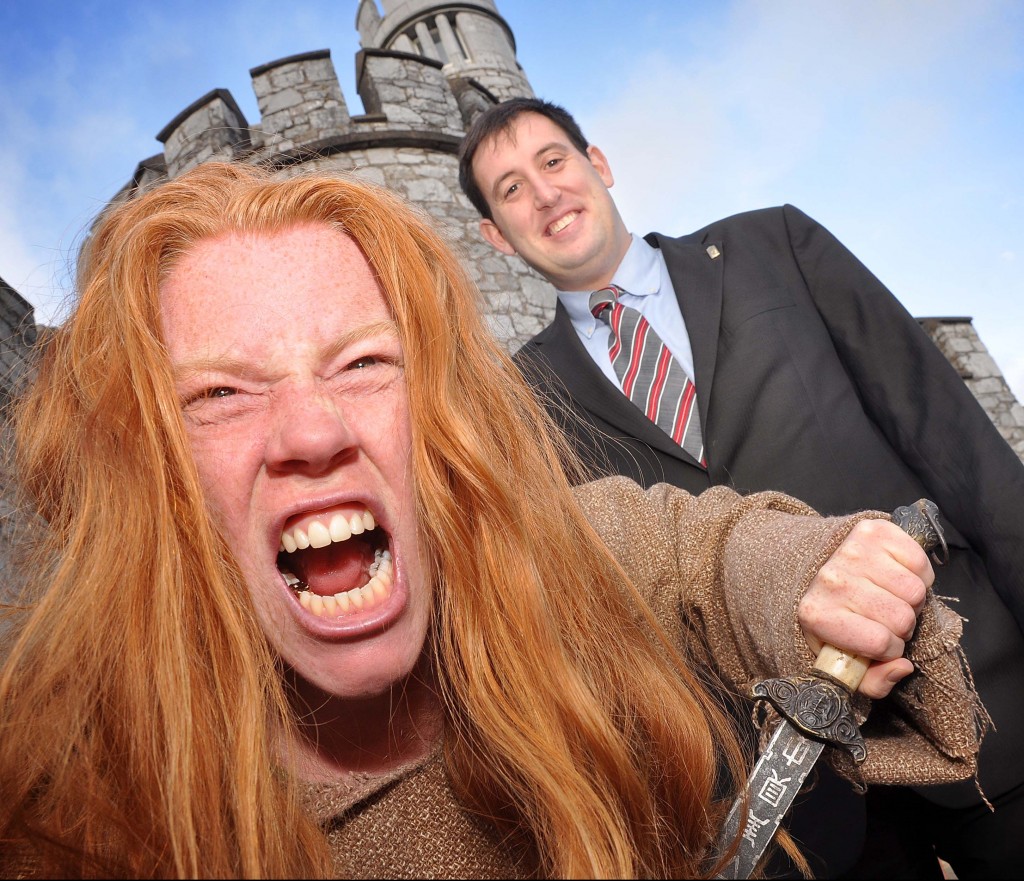

Last night, Friday 13 November, I again had the chance to deputise. This time to represent the chain at the launch of Japanese Film Festival at the Kino Cinema. There I met with the film festival director and first secretary to the Japanese Ambassador in Ireland, Mr. Shinji Yamada. I also met with Maeve Cooke of Access Cinema and representing one of the sponsors, Patrick Morrisssey of JTI.
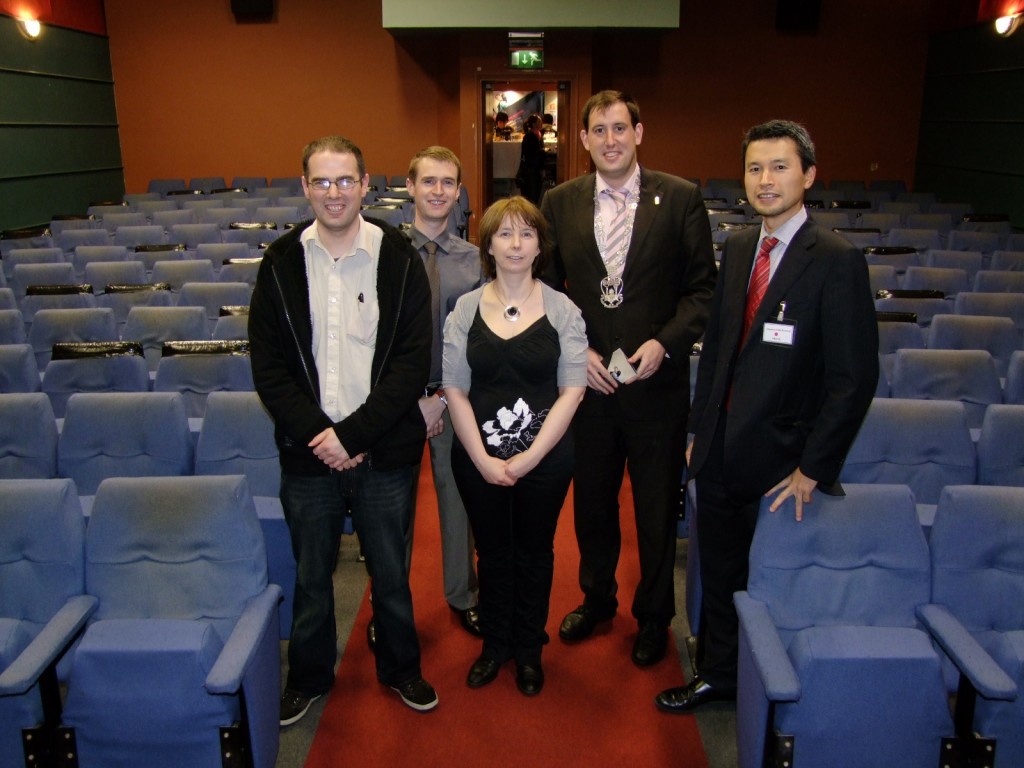
Kieran’s Speech
Eye on Japan
Kino Cinema, Friday 13 November 2009
First Secretary to the Japanese Embassy, Ladies and gentleman, it’s a great pleasure to be in one of Ireland’s key art house cinemas – the Kino here, this evening. In addition, this evening, it is an even greater pleasure to be present at the launch of an internationally based film festival at the Kino.
Japan has one of the oldest and largest film industries in the world, being currently the third largest by number of feature films produced. Japanese Cinema seems to be a hard thing to clearly define. “According to Japanese directors, making use of Japanese actors, filming in Japan, and screening a Japanese movie in Japan” are said to be the requirements of the foundation. Early films had influences from traditional theater. One of the first successful Japanese films was viewed in late 1897 and showed various well-known sights in Toyko
And to this day, Japanese films are strongly influenced by Japanese culture. Interestinglya Corkman, John Fenton, was involved in composing the Japanese national anthem
This weekend the Japanese Film Festival returns to our city by the Lee weekend for the second time with a programme which mixes drama and comedy; live action and anime and includes some of the best of Japanese Cinema over the past years as well as a couple of classics
We certainly will get a taste of quality and diversity of Japanese cinema.The programme has been chosen to give a better insight into Japanese people, society and culture because unlike music or theatre, a movie can show different aspects of the society.
I see there is a wide audience for Japanese films in Ireland, much of that audience is focussed on the country’s anime output – there is a very high quality of animated features produced in Japan – here in the Kino, the full diversity of Japanese film is covered.
Tonight the programme commences with a screening of A Stranger of Mine. Kenji Uchida draws together three stories of men who find their lives unravelling due to the actions of others – interestingly, the story seems very apt for Ireland’s story today.
However, the medium of film power has the power to grasp, encourage wonder, inspire confidence, motivate a self-purpose, provoke questions and the imagination and even draw in the viewer and even disturb and so much more – lessons of life can be presented and debated.
I have no doubt for many of those present to view Cork’s Japanese Film Festival, you already have a love of film and even arthouse cinema. Ladies and gentlemen perhaps there is so much to learn through the medium of film – Actors and directors all bring their own talents, confidence self pride, self belief and a desire to perform their medium. Those are all very important traits
Ladies and gentlemen, in this world, we need more of such confidence, pride and belief – we need to mass produce these qualities, all of which these films stand for
Ladies and gentlemen, they continue to present us with the question – well what are we doing in our own lives to push forward? What is the real film that we are all making?
I would like to encourage everyone to keep filming, keep rolling.
I would also like to thank the Kino, its staff and Mr. Shinji Yamada who saw the opportunity to bring a taste of international culture to Cork. But I encourage all of us to keep watching, praising, critiqing and even giving our own direction to what not only film genres we should watch but also how film can be harnessed to nurture people’s motivations.
This is where film gives hope and have no doubt has saved souls.
I wish to congratulate all involved in the festival and wish the festival all the best for the future. And to the cinema goer, keep watching!
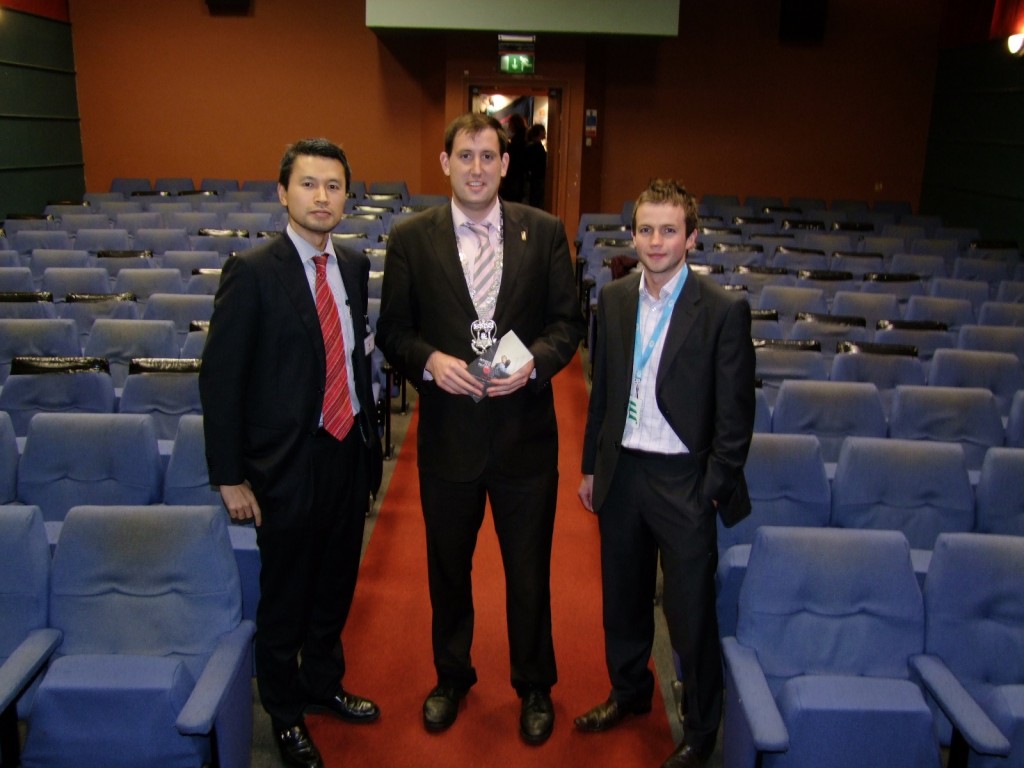
Did You Know?!
Walking through Ballinlough, people talk about their affinity for the place’s tranquillity and its green areas. They speak about how Ballinlough sits on a suburban ridge overlooking the river and harbour area and faces further afield to the architectural beauty of Cork’s Montenotte and St Lukes. Ballinlough also has the view of County Cork’s southern ridges and troughs. Perhaps it was the view and good land that led the area’s first recorded resident Patrick Meade to settle in the area. In records from 1641, Ballinlough was written as Ballynloghy and Patrick, a Catholic, had 144 acres of profitable land. The Meades were originally from the west coast of England. On arrival in Cork, they built themselves into the fabric of the key merchant families of the city along with families such as the Roches, Goulds, Coppingers, Sarsfields, Galways and Tirrys. The history books note that the Meade family had a castellated mansion near the present day Clover Hill House.
During the Cromwellian wars, Patrick Meade was dispossessed of his property. William Tucker had the caretaker’s lease on the property through Oliver Cromwell. Subsequently, the 144 acres were given to Alexander Pigott. The Pigotts came from Chetwynd in Shropshire and initially came to Ballyginnane beyond present day Togher. In time, they re-named this area Chetwynd. Colonel William Piggott was in Oliver Cromwell’s army and was rewarded further with land across Cork’s southern hinterland. Indeed in the early 1660s, the population of Ballinlough was recorded in a census as having 30 souls (to be continued, check out www.corkheritage.ie for more Cork history!).
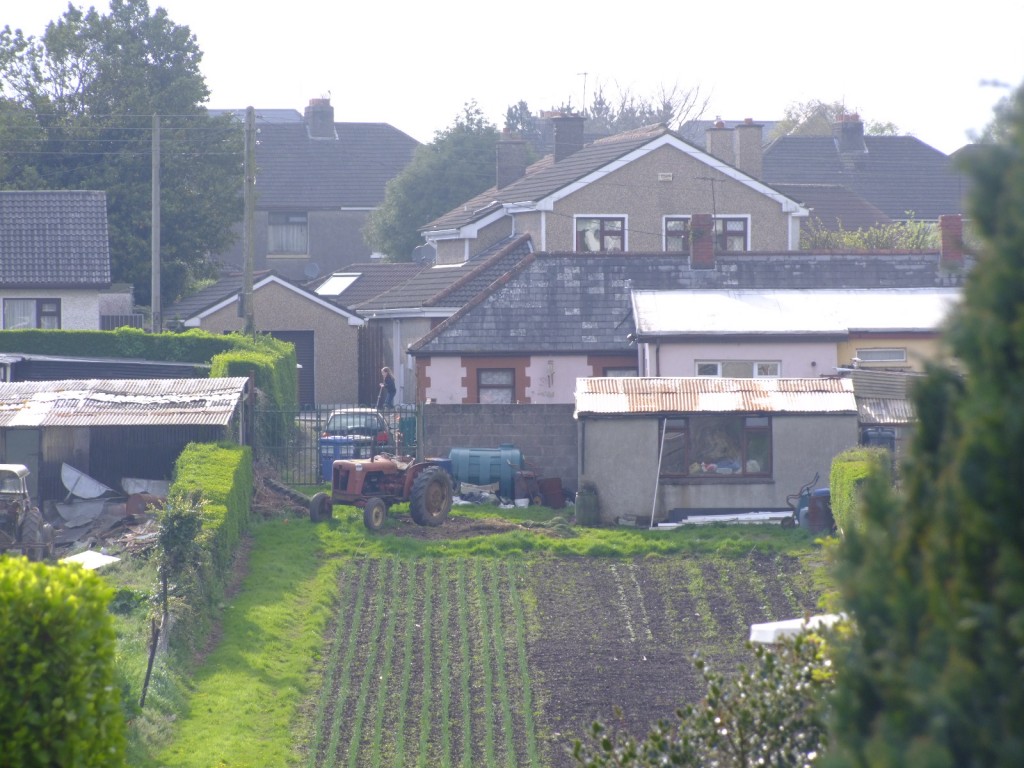
Kieran’s article, “Pillars of Education”,
adapted from the memory section of the book,
Ri Connect, Colaiste Chriost Ri at 50 years old
 It’s amazing how all types of memories of your school days stay with you. I can remember my first day in Chríost Rí waiting in the yard and Mr. Tobin directing us to our first year rooms. But during all of my time in the school, Mr. Tobin was always the starter, the man who in a sense directed all our destinies at the start of each year. I was, like most others, anxious on the first day way back in September 1989. Finding my way around my new school was daunting. I was assigned to Naomh Ronán on the top floor and met my first form master Mr. Brett for the first time. I remember him writing his name across the board asking us to spell his name correctly on our copy books. And perhaps as this concerned teacher wrote on the board, he was writing himself into my own educational history in Chríost Rí as he taught me each year over the seven year period I attended the school. This caring teacher, apart from maths and physics, also taught us life traits. He believed in the principles of honesty, genuineness and hard work, traits I took away from those days and try to harness as best as possible in my own life today.
It’s amazing how all types of memories of your school days stay with you. I can remember my first day in Chríost Rí waiting in the yard and Mr. Tobin directing us to our first year rooms. But during all of my time in the school, Mr. Tobin was always the starter, the man who in a sense directed all our destinies at the start of each year. I was, like most others, anxious on the first day way back in September 1989. Finding my way around my new school was daunting. I was assigned to Naomh Ronán on the top floor and met my first form master Mr. Brett for the first time. I remember him writing his name across the board asking us to spell his name correctly on our copy books. And perhaps as this concerned teacher wrote on the board, he was writing himself into my own educational history in Chríost Rí as he taught me each year over the seven year period I attended the school. This caring teacher, apart from maths and physics, also taught us life traits. He believed in the principles of honesty, genuineness and hard work, traits I took away from those days and try to harness as best as possible in my own life today.
 The educational foundation stones put into my young teenage life were significant. Looking back now, I enjoyed the craic and banter of Mr. Lankford’s Irish class as he gave us all a love for Irish culture and introduced many of us to Conradh na Gaeilge. Mr. O’Shea’s English class cultivated in me a love for drama and the arts as we acted out the plays on the Junior Cert course. Other teachers such as Br. Bosco gave me a love of science, equations and figuring things out. Mr. Crowley through Geography developed my early love for the world around me. I remember in third year we went on a fieldtrip to Ardnacrusha on the Shannon basin and my love of rivers began and my interest in their power and beauty. In later years, Mr. O’Leary brought my class out along the Lee on fieldwork and instilled in me a deeper love of physical geography. Many years later, I pursued geography a subject in my degree years in college. I also penned a book on Inniscarra Dam and many articles on the lovely River Lee in the Cork Independent.
The educational foundation stones put into my young teenage life were significant. Looking back now, I enjoyed the craic and banter of Mr. Lankford’s Irish class as he gave us all a love for Irish culture and introduced many of us to Conradh na Gaeilge. Mr. O’Shea’s English class cultivated in me a love for drama and the arts as we acted out the plays on the Junior Cert course. Other teachers such as Br. Bosco gave me a love of science, equations and figuring things out. Mr. Crowley through Geography developed my early love for the world around me. I remember in third year we went on a fieldtrip to Ardnacrusha on the Shannon basin and my love of rivers began and my interest in their power and beauty. In later years, Mr. O’Leary brought my class out along the Lee on fieldwork and instilled in me a deeper love of physical geography. Many years later, I pursued geography a subject in my degree years in college. I also penned a book on Inniscarra Dam and many articles on the lovely River Lee in the Cork Independent.
Mr. Desmond’s business sense stood to me well. “Always be business like” was his saying and now in the world of business those words re-echo in my life as my own consultancy business is up and running. In terms of the arts, Mr. Daly’s French class cultivated a love of other western European cultures and I know in later years my words of French that have stayed in my mind I try to use if abroad. Mr. Brennan’s music class brought not only a love of music but instilled in me a trait to always be creative, to explore other possibilities and to think outside of the box. I still have my music copybooks and his colourful remarks inside. There were many foundations put into me in those years but I have to say good solid work cultivated a great work ethic in me and a love in particular of the arts and culture.
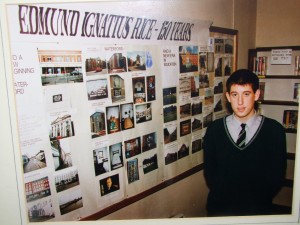 Perhaps when I entered Transition Year, I found my own niche through Mr. Carey’s history class as he taught us local history. Those stories I took into local primary schools on my job experience and began at an early to run my own walking tours across the city. My passion for Cork grew and continues to grow and blossom. In Leaving Cert years, I was given my first consultancy projects by Br. Walter and Mr. Power, two great men who gave me an opportunity to pen a project on the life of Edmund Rice and also encouraged me to put up my own photographic exhibitions on Cork long ago in the school library. A spirit of enterprise was built into me.
Perhaps when I entered Transition Year, I found my own niche through Mr. Carey’s history class as he taught us local history. Those stories I took into local primary schools on my job experience and began at an early to run my own walking tours across the city. My passion for Cork grew and continues to grow and blossom. In Leaving Cert years, I was given my first consultancy projects by Br. Walter and Mr. Power, two great men who gave me an opportunity to pen a project on the life of Edmund Rice and also encouraged me to put up my own photographic exhibitions on Cork long ago in the school library. A spirit of enterprise was built into me.
I also remember having to choose to return to Chríost Rí after my first Leaving Cert results wishing to get more points. But I recall the support of the then principal Mr. Corkery and his words to me that “everything happens for a reason”. How right this wise teacher was. My education in Colaiste Chríost Rí has stood to me. I push forward in life with my love for history, geography and the arts, my thirst for finding out more about the world I live in and my attempts to stay noble and honest, to work hard and to reach out as much as possible to others. For those traits and for others, I am eternally grateful.
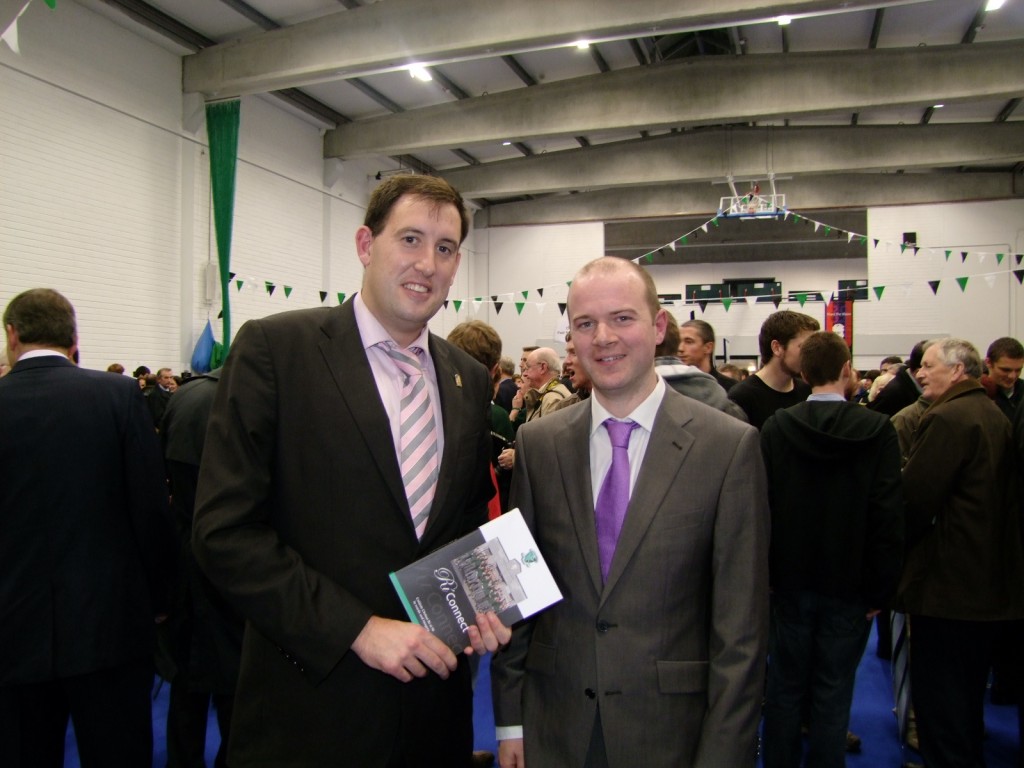
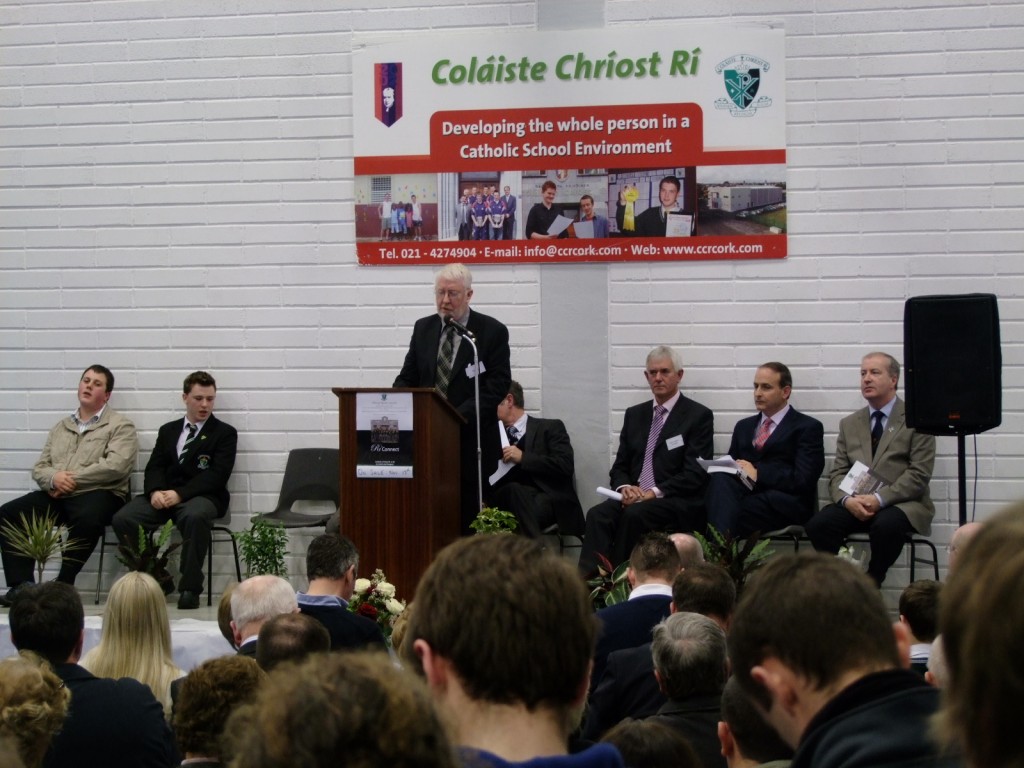


Kieran’s Comments/ Speech
Council Chamber, 9 November 2009
Re: Medieval Town Wall, Kyrl’s Quay & Kieran’s Motion
I’d like to thank again the director for his report on my motion and his honesty in terms of the regrettable condition of this national monument. Way back in 1993, Cork City Council expended a substantial amount in the archaeological investigation of 60 metres of the town wall during the creation of Kyrl’s Quay multi-storey car-park. Back then there were huge discoveries on the building of the thirteenth century wall, the Medieval way of life and how North Main Street area came into being.
This project was also part of the Cork Historic Centre action, whereby other initiatives, living over the shop, street refurbishment, the Cork Vision Centre and Fenn’s Quay re-development came into being. Highly successful in the short-term but fast forward to the present day and the long term effects of the plan seem not to have been fully realised. North and South Main Streets, where Cork began are now subject to high levels of dereliction, missing buildings, historical plaques hanging off walls. Medieval laneways and graveyards such as that of St. Peter’s riddled with anti-social behaviour.
The poor state of the town wall for me represents, where the Cork Historic Centre Action is at.
Indeed when it comes to any of our archaeology, the policy also seems to be, lets put it under the ground so no one can see it – despite the large volumes of archaeological reports that the Council have published.
The new Cork City Walls Management Plan should be harnessed to build another cultural arrow in the Council’s quiver – let’s keep some of that we do find and properly show it to the general public. I’m reminded of Eyre Square in Galway whereby a section of the town wall is on open display.
I also see that the Council’s only archaeologist, a temporary officer, is about to lose her job next summer as the permanent officer retires. That being said, only this morning, she was on her hands and knees excavating the crypt in Christ Church and preparing to find Hopewell Castle, one of the town wall’s turrets in Christ Church Lane. I’m just wondering what will the City’s archaeology plan be if the Council don’t have any archaeologist at all.